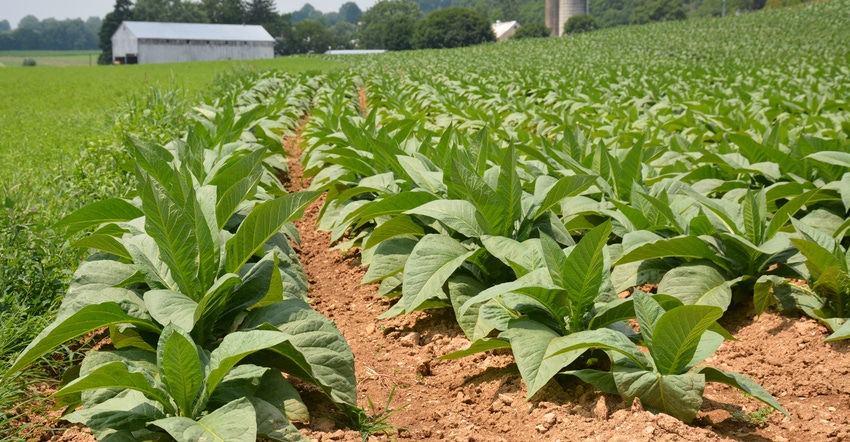
It’s too early to say just how many prevented planting acres there will be in New York, but reports indicate farmers planted a lot of late forage.
“In my lifetime, and I am 55, I have never seen it so cold and wet for the months of April and May. The majority of the crops planted in New York I would estimate were planted in June, which would make them three to four weeks late,” says Clark Putnam, state director of the Farm Service Agency in New York. “Being that dairy is big in New York, many acres that could have been left idle on June 10 (the final FSA planting date in New York) and called prevented planting have been planted in an attempt to produce forage to feed dairy cows.”
The Farm Service Agency extended the prevented plant crop reporting deadline to July 15 in New York and Vermont, which coincides with the July 15 crop acreage reporting deadline that’s already in place.
Normally, the prevented plant reporting deadline is 15 calendar days after the final planting date for a crop as established by FSA and the Risk Management Agency. The extension to July 15 only applies to FSA and does not change any Risk Management Agency crop insurance reporting deadline requirements.
It also does not apply to crops covered by FSA’s Noninsured Crop Disaster Assistance Program, or NAP. Farmers should check with their local FSA office regarding prevented plant provisions for NAP-covered crops.
Farmers are encouraged to contact their local FSA office as soon as possible to make an appointment to report prevented plant acres and submit their spring crop acreage report. You can go to farmers.gov/service-locator to find your local FSA office.
With prevented planting, farmers will get an indemnity payment based on the initial revenue guarantee for a crop. For corn, it is 55%; soybeans, 60%. For all other crops, visit bit.ly/preventedplantingcoverage and click on the “Which prevented planting coverage factors are changing for 2019?” tab.
Mixed bag up north
Wendy Wilson, executive director of Vermont FSA, says that overall, crops are mixed. The corn she saw on a recent day driving through the countryside was anywhere from 3 inches high to 18 inches high and dark green, based on when it was planted.
“Extremely wet weather from April 1 through the end of May put planting behind by about one month for at least most of the state,” Wilson says.
Colleen Cargile, crops reporter in Cayuga County, N.Y., says a storm June 20 was the breaking point for many farmers.
“Many farmers say they have never seen a year like this and it could be one of the biggest crop disasters the county has ever seen,” she says.
Larry James, a crop reporter in Aroostook County, Maine, says the weather has produced a nice hay crop for farmers.
“If the weather permits, the hay crop may be the best in years,” he wrote in a recent Crop Progress Report. “Potato and grain fields are growing quickly. Strawberries are being harvested and it looks like an excellent crop.”
Southern Maine, though, has been a little too wet.
“Strawberries were in short supply for strawberry festivals over the weekend,” according to Sandy Truslow, a crops reporter covering Cumberland and York counties. “Vegetables, which have been growing very slowly, are starting to come around. Fungicides are being sprayed. Some fruit trees are dying due to too much water. Many hayfields are too wet to cut. Silage corn was still being planted last week.”
Looking good in Mid-Atlantic
Corn and soybeans are growing rapidly in Pennsylvania now that the hot weather has returned.
“Hot weather spurred corn growth. Corn height from 12 inches to 60 inches,” according to John O. Yocum, a crops reporter covering Columbia County.
Corn and other crops are also growing rapidly in Lancaster County.
“Crops look very good. Believe it or not some areas of the county could use a nice inch of rain, especially in the southern end and in the New Holland area,” says Jeff Graybill, Extension educator. “I expect to see a few tassels on the corn next week and folks will start topping tobacco next week as well. Also seen some pretty impressive fields of hemp. Very little disease pressure thus far, and the quality of the wheat is much better than last year. Much less head scab and mycotoxins.”
Corn is averaging about 5 feet high in Maryland and Delaware, according to the latest Crop Progress Report.
Very early peaches are starting to be harvested in the central part of Maryland.
While most of the area has gotten ample precipitation, it’s starting to get dry in some areas. Here are some observations:
“A couple timely rains meant that crops are under little to no stress despite the heat. Barley yield is marginal, but wheat is yielding extremely well,” according to crops reporter Matt Morris, Frederick County.
“Drying up fast now. Some corn starting to tassel, too. Got hot all of a sudden. Went from too much rain to too hot and dry now,” according to Harry T. Hudson III, a crops reporter in Sussex County, Del.
“Dry period, need rain. Irrigation systems running where available,” according to crops reporter John Timmons, also in Sussex County.
About the Author(s)
You May Also Like






